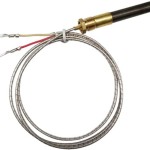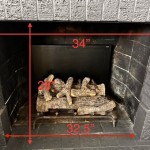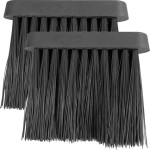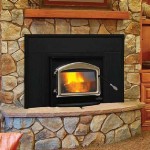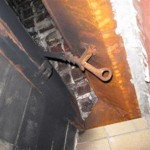Understanding the Appeal of Two-Sided Wood Burning Fireplaces
Two-sided wood-burning fireplaces, also known as see-through or peninsula fireplaces, offer a unique and compelling architectural feature for residential and commercial spaces. They provide the ambiance and warmth of a traditional fireplace while simultaneously serving as a visual focal point that connects two distinct areas. This article will explore the key aspects of two-sided wood-burning fireplaces, focusing on their design considerations, installation requirements, safety features, and the benefits they offer.
The primary advantage of a two-sided fireplace lies in its ability to visually and physically link two rooms. This characteristic makes them particularly well-suited for open-concept living spaces, where they can define zones without creating hard barriers. Imagine a fireplace separating a living room and a dining area, allowing the warmth and flickering flames to be enjoyed from both spaces. This design element can foster a sense of connection and openness within a home.
Beyond their functional benefits, two-sided fireplaces also enhance the aesthetic appeal of a space. The ability to view the fire from multiple angles creates a dynamic and engaging visual experience, making the fireplace a true centerpiece. The design possibilities are extensive, ranging from modern, minimalist styles to more traditional, rustic designs. The choice of materials, such as brick, stone, or metal, can further customize the fireplace to complement the existing décor of the surrounding rooms.
Design and Architectural Considerations
Designing a two-sided wood-burning fireplace requires careful consideration of several factors, including the structural integrity of the building, building codes, and the desired aesthetic. The weight of the fireplace itself, along with the chimney system, must be properly supported by the foundation. It is crucial to consult with a qualified structural engineer to ensure that the building can adequately bear the load.
Building codes vary by location and typically dictate specific requirements for fireplace construction, including clearances from combustible materials, chimney height, and ventilation. Adhering to these codes is essential for safety and legality. A certified fireplace installer or contractor will be familiar with local regulations and can ensure compliance.
The design of the fireplace should also complement the architectural style of the building and the décor of the surrounding rooms. Consider the proportions of the fireplace relative to the size of the rooms it will serve. A fireplace that is too large can overwhelm a space, while one that is too small may seem insignificant. The choice of materials, such as brick, stone, or metal, should harmonize with the existing color palette and textures. The shape of the firebox, whether rectangular, arched, or custom-designed, also contributes to the overall aesthetic.
The placement of the fireplace is another critical design consideration. Ideally, it should be positioned in a location where it can be easily viewed from both rooms and where it will not obstruct traffic flow. Consider the orientation of the fireplace in relation to windows and doors to minimize drafts and maximize energy efficiency. The surrounding area should be carefully planned to provide comfortable seating and easy access to firewood.
Furthermore, attention should be given to the design of the chimney system. The chimney must be properly sized and insulated to ensure adequate draft and prevent creosote buildup. The chimney cap should be designed to prevent rain and debris from entering the flue. The exterior of the chimney should be designed to blend seamlessly with the architecture of the building.
Installation and Safety Requirements
Installing a two-sided wood-burning fireplace is a complex process that requires specialized skills and knowledge. It is strongly recommended to hire a certified fireplace installer or contractor to ensure that the installation is performed correctly and safely. Incorrect installation can lead to serious safety hazards, such as carbon monoxide poisoning or house fires.
The installation process typically begins with preparing the site, including clearing the area and ensuring that the foundation is level and stable. The fireplace unit is then carefully positioned and secured. The chimney system is installed according to the manufacturer's instructions and local building codes. The surrounding area is then finished with the desired materials, such as brick, stone, or metal.
Safety is paramount when installing and operating a wood-burning fireplace. Carbon monoxide detectors should be installed in both rooms served by the fireplace to provide early warning of dangerous gas levels. The fireplace should be regularly inspected and cleaned to prevent creosote buildup, which can lead to chimney fires. A qualified chimney sweep should be hired to perform annual inspections and cleanings.
Fire extinguishers should be readily accessible in both rooms, and occupants should be familiar with their proper use. A fire screen should be used to prevent embers from escaping the firebox and potentially igniting nearby materials. Flammable materials, such as furniture, curtains, and rugs, should be kept a safe distance from the fireplace.
Proper ventilation is essential for safe and efficient fireplace operation. The damper should be fully open before lighting a fire to ensure adequate draft. Avoid overloading the firebox with wood, as this can lead to incomplete combustion and increased creosote buildup. Never burn treated wood, painted wood, or other materials that can release toxic fumes. Only seasoned firewood should be used, as it burns cleaner and more efficiently.
Benefits of Two-Sided Fireplaces
Two-sided wood-burning fireplaces offer several advantages beyond their aesthetic appeal. They can effectively heat two rooms simultaneously, reducing reliance on central heating systems and saving energy. The radiant heat emitted by the fireplace provides a comfortable and even warmth that is often more enjoyable than forced-air heat.
The ambiance created by a wood-burning fireplace is another significant benefit. The flickering flames, the crackling sound of burning wood, and the cozy warmth all contribute to a relaxing and inviting atmosphere. A fireplace can transform a house into a home, creating a focal point for family gatherings and social events.
Two-sided fireplaces can also increase the value of a home. They are considered a desirable architectural feature that appeals to a wide range of buyers. A well-designed and properly installed fireplace can enhance the perceived value of a property and make it more attractive to potential purchasers.
Furthermore, wood-burning fireplaces can provide a reliable source of heat during power outages. In the event of a winter storm or other emergency, a fireplace can serve as a backup heating system, ensuring that occupants remain warm and comfortable. This feature is particularly valuable in areas that are prone to power outages.
The environmental impact of wood-burning fireplaces is a subject of ongoing debate. While burning wood does release carbon dioxide, it is considered a carbon-neutral fuel source if the wood is harvested sustainably. Trees absorb carbon dioxide from the atmosphere during their growth, and burning wood simply releases that carbon back into the atmosphere. However, it is important to use seasoned firewood and operate the fireplace efficiently to minimize emissions of particulate matter and other pollutants. Newer fireplace models often incorporate advanced combustion technologies that significantly reduce emissions.
In conclusion, two-sided wood-burning fireplaces present a unique combination of aesthetic appeal, functional benefits, and design considerations. From effectively heating two rooms at once to increasing the value of a home, these fireplaces add significant value to both commercial and residential spaces.

Double Sided Fireplace Insert 2 1 Rais Wood Burning

Double Sided Fireplace Insert 1050 Jetmaster Wood Burning

Double Sided Wood Burning Stoves Direct

Pros And Cons Of Double Sided Fireplace Modus Fireplaces

What Are The Best Double Sided Stoves Direct Resources

View Our Range Of Double Sided Stoves

View Our Range Of Double Sided Stoves

The 1 See Through Fireplace Double Sided
:strip_icc()/101650552-e405da465bcf430c8a00a965d349be86.jpg?strip=all)
Two Sided Fireplaces

Statuette Of Double Sided Gas Fireplace Warmer Unique Room Divider And Interior Accent Remodel Freestanding
Related Posts

